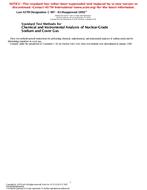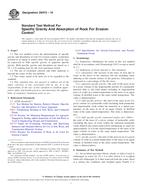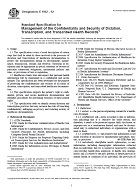1.1 This test method describes the instrumental measurement of color coordinates and color differences by using a tristimulus (filter) colorimeter, also known as a color-difference meter. This test method does not apply to the use of a spectrocolorimeter, which is a spectrophotometer that is normally capable of producing as output colorimetric data, but not the underlying spectral data from which color coordinates are calculated. Measurement by using a spectrocolorimeter is covered in Practice
1.2 Provision is made in this test method for the measurement of color coordinates and color differences by reflected light using either a hemispherical optical measuring system, such as an integrating sphere, or a bidirectional optical measuring system, such as annular, circumferential, or uniplanar 45/0 or 0/45 geometry. Provision is also made for measurement by transmitted light using a hemispherical optical measuring system.
1.3 Because of the limited absolute accuracy of tristimulus (filter) colorimeters, this test method specifies that, when color coordinates are required, the instrument be calibrated by use of a standard having similar spectral (color) and geometric characteristics to those of the specimen. The use of a product standard of suitable stability is highly desirable.
1.4 Because of the inability of tristimulus (filter) colorimeters to detect metamerism or paramerism, or to correctly measure metameric or parameric pairs of specimens, this test method specifies that, when color differences are required, the two specimens must have similar spectral (color) and geometric characteristics. In this case, the instrument may be calibrated for reflectance measurement by use of a white reflectance standard or, for transmittance measurement, with no specimen or standard at the specimen position.
1.5 While this test method is generally suitable for all object-color specimens, it should not be used without observing certain restrictions on the geometries and calibration procedures appropriate for different types of specimens and uses, and on the spectral character (metamerism or paramerism) of specimens and standards.
1.6 This standard does not purport to address all of the safety concerns, if any, associated with its use. It is the responsibility of the user of this standard to establish appropriate safety and health practices and determine the applicability of regulatory limitations prior to use.
Product Details
- Published:
- 06/10/1997
- Number of Pages:
- 4
- File Size:
- 1 file , 77 KB


